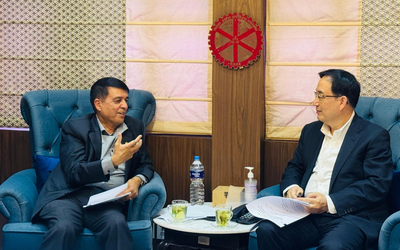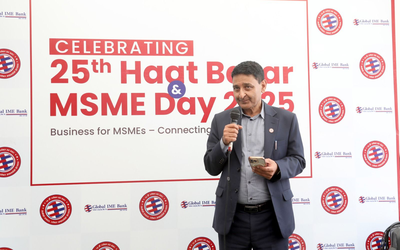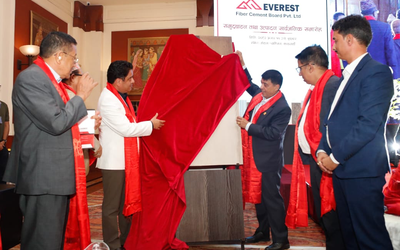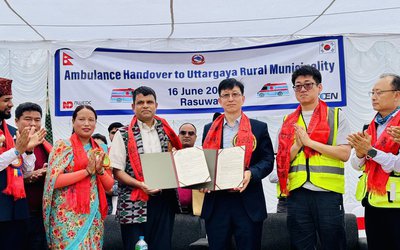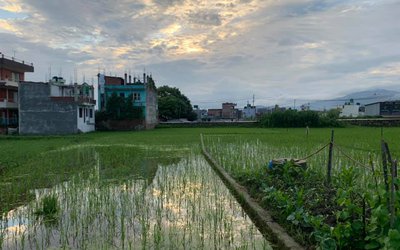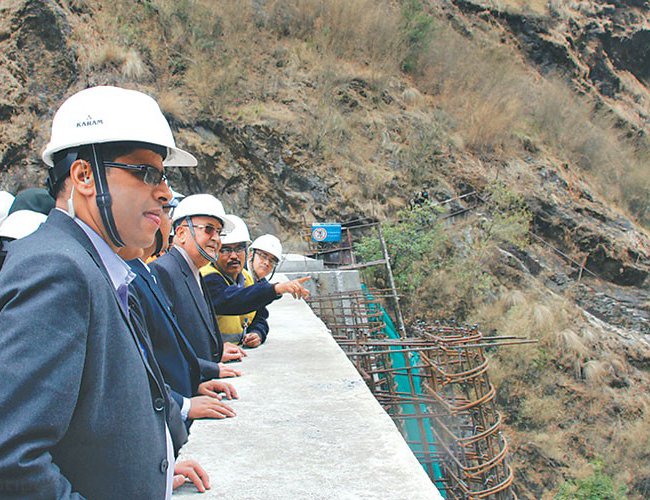
Although Prime Minister KP Sharma Oli visited the construction site and directed the Nepal Electricity Authority (NEA) and Upper Tamakosi Hydropower Project officials to complete the project in time, it is unlikely for the work to complete as scheduled.
“Nobody will be allowed to make any kind of excuse to push back the completion deadline,” thundered PM Oli. “This is a strategic project designed to turn Nepal into an energy surplus country from an energy deficit country.”
Upper Tamakosi, according to the plan, must start generating electricity from one of its six units by December 2018 and with the rest coming online by May after that.“This is a national pride project, and I am ready to provide any kind of help to complete its construction on time. I expect the same kind of dedication from all the stakeholders to complete the project,” said Oli.
In other projects, the Chinese contractors are blamed for the delay. In this, Indian companies are doing the delay. According to senior officials of NEA, Texamaco Rail and Engineering, the Indian contractor hired to execute the hydro-mechanical work, has been negligent.
PM Oli assured that he would even use diplomatic channels to make the company work faster. Bigyan Raj Shrestha, chief of Upper Tamakosi, said the Indian contractor’s negligence might push back the project’s completion date.
“The contractor is currently erecting a vertical shaft in the tunnel, but it has been working very slowly,” said Shrestha. “Also, we are facing difficulties in transporting heavy electro-mechanical equipment that need to be installed at the hydropower plant due to the bad state of the 60-km road from Khadichaur to Charikot, Dolakha.”
NEA Managing Director Kulman Ghising, who accompanied the prime minister on his visit to the project site, said timely launch of the project was crucial to reduce power import from India. “We are importing electricity worth Rs15 billion annually,” said Ghising. “Once the project comes online, we will be in a position to export power at least during the wet season.”
According to project officials, around 95 percent of the construction has been completed as of date, and work is progressing slowly. The national pride project was originally scheduled to be completed in mid-July 2016, but the earthquake, Indian trade blockade and various technical and social issues pushed back the completion date. Before the earthquake hit the country, the project had completed 79 percent of the civil work.
It also faced cost overruns due to the delays. The project is now expected to cost Rs49 billion, up from the previous estimate of Rs35.3 billion. Nevertheless, the project is considered to be a model project, which is being developed with domestic resources and a high level of participation by project-affected locals and the general public.
During his inspection visit to the tunnel and dam site at Bigu Rural Municipality-1 in Dolakha district, the Prime Minister asked the officials to perform their duty responsibly and assist in the nation’s development process.
According to estimates, the project is bearing a loss of Rs 40 million every day due to delay in construction of the 456 megawatt project.
During the inspection, the Minister for Energy, Water Resources and Irrigation, Secretary at the Ministry of Energy and Water Resources and Managing Director of Nepal Electricity Authority were also there.
“Upper Tamakosi Project should be completed in the given deadline at any cost,” said Barsha Man Pun, Minister of Energy, Water Resources and Irrigation
Chief of the Project, Bigyan Raj Shrestha, said supplying construction materials is a challenge due to poor condition of road from Charikot to Lamosanghu.
The construction work of the project was extended by two years due to Gorkha Earthquake and Indian blockade on Nepal. The first unit of the project is targeted to generate power by the end of 2018, while all six units are expected to come into operation from mid-April of 2019.
“The cost of the project so far has stood at Rs 37.71 billion and the total cost of the project is likely to exceed Rs 49 billion,” said Ganesh Prasad Neupane, spokesperson of the project.
Given the speed of work by the Indian contractor, the project is unlikely to get completed as per the schedule. The time has come for the project management to act.
- MELAMCHI WATER SUPPLY: No Interruption During Monsoon
- Jun 25, 2025
- KOREAN RETURNEES: Successful Integration
- Jun 25, 2025
- UPPER TRISHULI-1: Engaging With Local
- Jun 25, 2025
- IME GROUP: Twenty Five Years Of Journey
- Jun 24, 2025
- NEPAL’S AIR POLLUTION: A Growing Health Concern
- Jun 24, 2025


